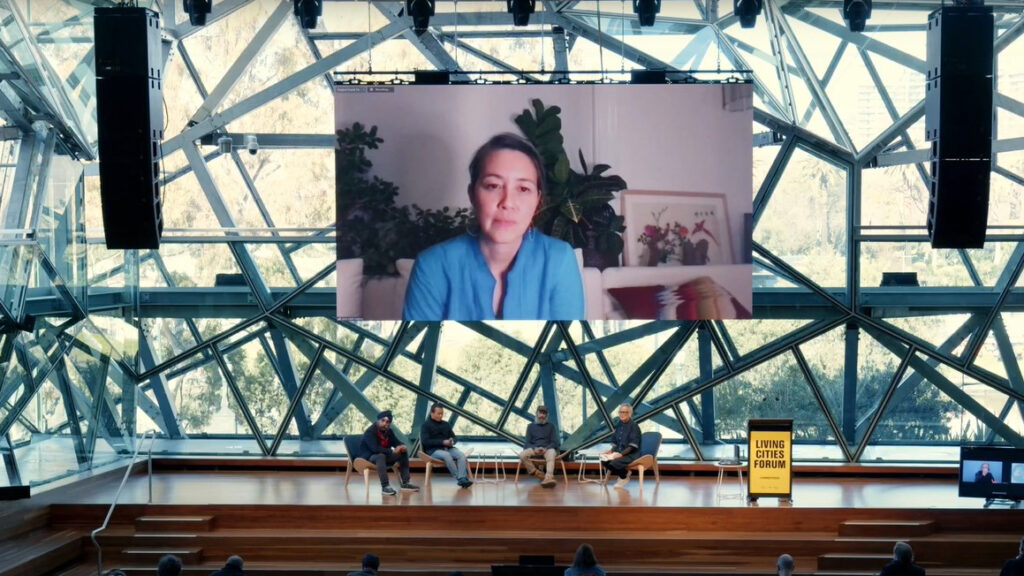
From material extraction to material stewardship: Living Cities Forum 2022 panel discussion
Keynote speakers discuss the tree as a clue to our complex co-dependent relationship with the world around us, and our need for a new way to care for that world.
This article is part of our Living Cities special series, following the 2022 Living Cities Forum that was held on 21 July in Melbourne. It is made possible through the support of the Naomi Milgrom Foundation. If you missed the forum you can watch all the presentations here
Mel Dodd: In watching your presentations this morning I was struck by the many connections between your very diverse stories about materials, their use and their flows. Taken together they point to a reorientation in our relationship to materials, from extraction to stewardship and care. I was also struck by the different scales that you each address, from the infrastructural to a much more intimate connection with materials. I wonder if we could start by focussing on scale, and if I could ask you whether you think there’s a conflict, or a tension let’s say, in those scales.
Dave Wandin: In what we are discussing there is a conflict that arises by not understanding our natural environment that exists, and imposing a built environment upon it, not recognizing that these two things actually work together.
There are lessons in our past, however, of ecological systems that have healed and recovery processes that happened. Given the right encouragement this can happen without, what should I say, monetary, physical and spiritual punishments.
But the longer we try to put it off and hope that it’s not going to happen, the more inevitable a conflict will become. We have been getting advice on the climate crisis that is coming from the 1970s, and the world has been ignoring it.
This looming problem was known by my elders. None of them were scientists or academics, but they predicted that this was coming. But nobody wanted to listen. We have missed that opportunity. Unless we now recognize those mistakes now we won’t be able to move forward without conflict.
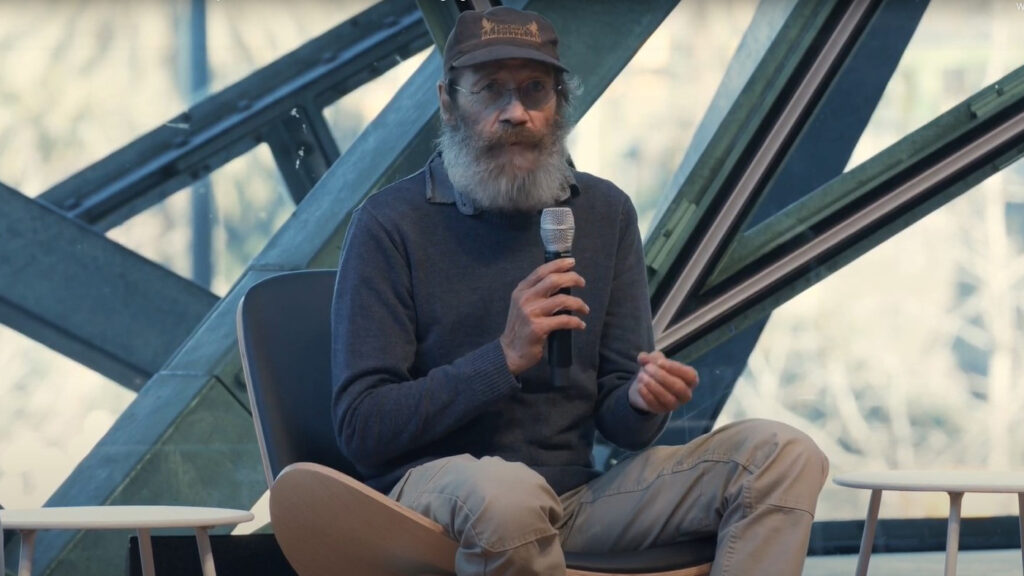
MD: Jane, your stories about materials took us all in into a whole cultural system of extraction to production. In telling that story, are there any clues as to how we might need to change our relationships to material, at diverse scales?
Jane Mah Hutton: It’s very interesting to be in this moment, when we are deeply thinking about local production and the need to really understand what our relationships are to where we are. At the same time, we are coming to the realisation that we are also absolutely part of a planetary citizenship and understanding the force of global organizing that is required, if we are going to respond effectively to the current state of affairs. Far from bring in conflict, there is a real need to think about both at once.
MD: Another common theme that has come through every single person’s talk is the subject of trees. I don’t mean that in a trite way, but rather in the sense that the tree is understood fundamentally as a key form of civic infrastructure. It kept coming up in each of the presentations.
Indy Johar: It is true that we often treat trees like objects. We objectify them. But when Uncle Dave took us on a walk on Country yesterday, it was clear that the tree is not an isolated object. It’s in a web of life. Even as it decays it creates the framework for other species to thrive as part of a complex biodiversity.
The tree is a perfect example of how we need to reset our understanding of material value. A tree-line street in a city will reduce the street temperature by up to 12 degrees, in turn reducing the maintenance cost associated with heat damaged tarmac. That tree-line street will also increase property values, reduce flooding risks, increase the microbiome quality, which means that the health of humans is better. When you start to see this, you start to be conscious that we can’t optimize trees just for one effect. We have to recognize interdependence and co-beneficiary realities.
DW: The tree in our Aboriginal culture is a most sacred object. When we talk about managing Country, the one thing we are not allowed to damage are trees. A young tree may be harvested, but our ancient eucalypts, which have been around for five, six or seven hundred years are quite revered in our society.
We think of trees as the parents that we live under. We are only the children that are living underneath those trees. We learn from them. I sit there. Sometimes for 20 minutes, sometimes for three hours and four hours. I wait for those trees to indicate what I need to do next.
That’s why I don’t have many internal conflicts, by understanding the role of a tree. But not a tree on its own, but rather what it supports. What is above it, what it supports within it, what it supports underneath it and what it supports in its surrounds. When you start to understand that philosophy it all becomes much, much clearer.
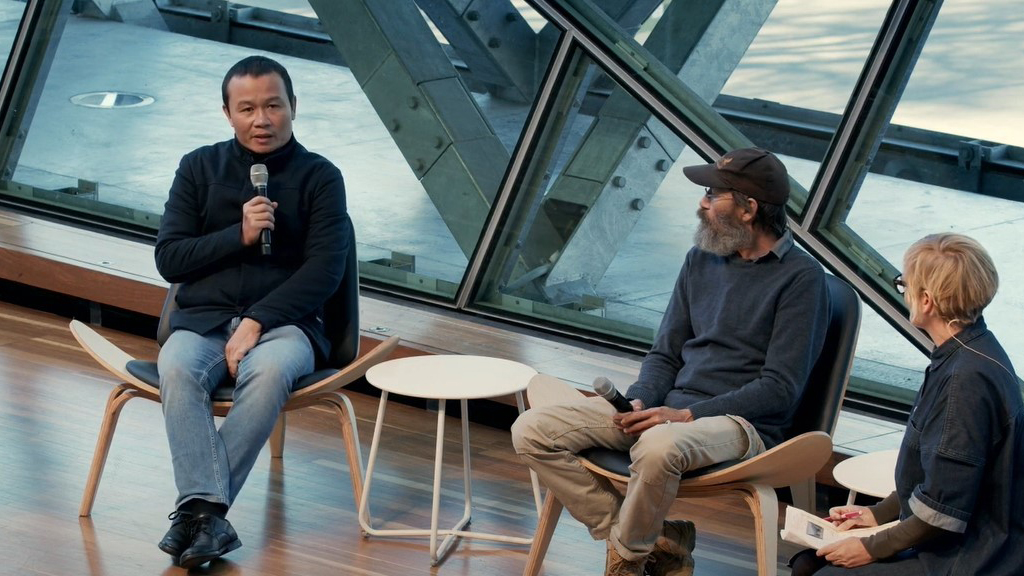
Vo Trong Nghia: Trees have a very important role in my work. In a city like Ho Chi Minh or Hanoi we use trees and plants to reintroduce the greenery because almost the entire city is composed of concrete. And just like Uncle Dave, we also meditate under the tree. So trees play a very big, important role for our lives and for my meditation. Buddha encouraged us to meditate under the tree.
When I was a kid it was strange when we heard about mental problems and about people committing suicide in the developed country. It was a strange concept to us. But now we are facing that problem because of the lack of nature in the city. We live in concrete boxes and around us we have severe air pollution. That’s why we need more trees and plants, as part of a wider eco system for the city, to reduce the mental sickness of our inhabitants in our cities across Vietnam.
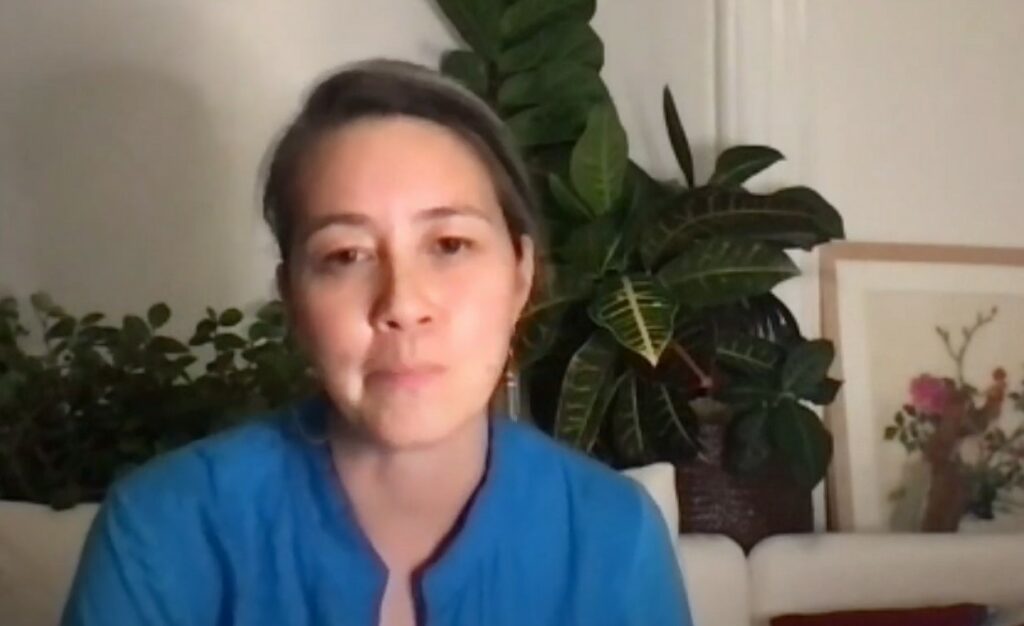
JMH: Thinking specifically of street trees, I imagine many of us have been to cities where street trees are dead, dying or have short lives. That is absolutely an indication of thinking about trees as objects. In researching the history of the building of New York, all of these themes of the mutual relationships and interdependencies between people and trees really came forward.
So we need to recognize that healthy canopies are partly a consequence of generations of different people tending them and caring for them. We also need to recognize how much our ability to breathe healthy air or survive hot summers and enjoy our environment comes from the longevity of trees.
It is very moving to recognize this back and forth like the back and forth of carbon dioxide and oxygen. People and trees are breathing together.
I heartening to see how we are thinking about street trees differently. In the past we used to plant one species everywhere but now there are so many more species being planted and we have developed a complex understanding of the different conditions within a small area, within a neighbourhood, and within that neighbourhood there are different ecological conditions that allow some plants to thrive. Rather than thinking that the city is one thing, we are increasingly recognizing that there are so many different kinds of relationships with other species, where moisture conditions and all kinds of micro microclimates really matter.
MD: Another commonality in each of your presentations was the place of land and land ownership, in our discussion on materials and material flow. This was particularly prominent, Indy, in your challenge to move away from a private ownership economy to a many-to-many economy. And of course Uncle Dave spoke at length about Country and different forms ways of understanding ownership, custodianship, treaties and various relationships to land, reorientating our view to a relationship that is millennia old. Can you speculate as to the practical ways that land value, in a real estate sense, could be separated from the other real values that land, or Country has to us?
JMH: This question makes me think about what it means where I am in Canada, in a place where there are calls for the return of land to indigenous communities. This has not moved very far, and the urgent question we have is how we start to take those calls more seriously.
This is challenging for designers who are meanwhile going about business based on this system of property ownership, which is taken for granted as the beginning of a project. So right now, the distance between that reality and the reality of a call to not develop without consultation is a very enormous elephant in the room that is not being really dealt with.
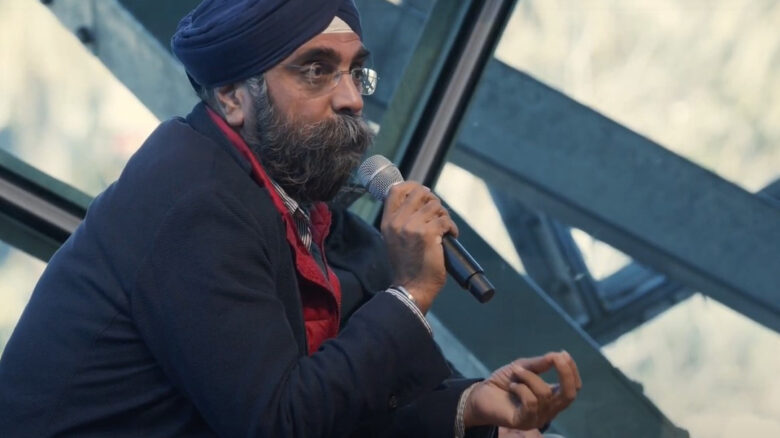
Indy Johar, a founding Director of 00 and Dark Matter Labs
IJ: One way to look at this is to understand ownership as the right to destroy. Consider soil for an example. It takes thousands of years to make soil. In that context the question is, who has the right to destroy soil? That kind of ownership may have come to the end of its time.
Looking at this from another perspective, you could also ask, who owns liability? More specifically who owns the liability for land? If you own a farm that is releasing carbon, who owns that liability?
Our governance and contractual mechanisms fundamentally need to be reimagined, to rhyme with lessons of first nations and indigenous nations. This is how we build a new way of relating and stewarding the world. That is a revolution. It’s a meeting of capitalism in a systems world, with indigenous knowledge, in a post domination theory of organizing.
Another example, from a project we are currently working on, is a house that that is self-owning. The house is not owned by one person. It is financed through a perpetual bond, so it has money going through it but it’s not a rent-seeking system. The materials aren’t owned but are part of a loop in a material trust. This means the materials are maintained in a different way. We are stewarding that house, but we’re not owning it or renting from it. These things are now possible and we’re seeing that happen in many, many formats around the world.
DW: This subject of land ownership could go in many directions from an Aboriginal perspective. But let’s look at land tenure. As much as we are working through a treaty here in Victoria, no one really knows how to approach it. The value of land is difficult because in our culture we don’t have ownership of it. We are custodians more than owners. So how can the government sell back the land? It’s the government that has put a price on the value of land, based on its economic return. But they only want to dispose of land that they can no longer get an economic return out of.
This very much ties into our discussion on materials, and knowing where your responsibility to materials, or to land begins and ends? Are you only responsible when it’s giving you an economic return? And as soon as it doesn’t, then are you the one who’s responsible to dispose of that land and then put a value on something that is useless to you, but you charge somebody else so that you get a return. It’s a really convoluted circle that has been created, which goes completely against the idea of a circular ecology. It’s actually a reverse cycle. A never-ending depletion of a material value of land.
This is a problem that I have across every type of operation that I want to do on any part of my Country, or indeed helping other indigenous people on their Country. While we do get given land, there’s usually a condition on it that we are not allowed to sell it because we never owned it in the first place.
The government is giving us land back, handing over the responsibility, but often we inherit useless land. This has dubious benefit for either the government or for the individual or the groups that are getting that land back. It’s a constant dilemma into when we enter negotiations on land and land rights or treaty. This is goes to the heart of what ownership means, which is really a recent imposition in human civilization.
I really do struggle with the concept of ownership. We are called traditional owners because the government of the day cannot still get their head around the idea that you can use resources off the land and not own it. When we talk about this step change that we need to make, in some ways I agree with Indy that we have to get right away from that ownership.
That said, if you do want to claim ownership to a bit of land then you have to accept all the responsibilities that comes with that. If it’s good land and it contributes to the reduction of climate change, you’ve done the right thing. That means you have taken on your responsibilities. But if you are going to use that land and deplete it, and deplete it, and deplete it, then you can’t just dispose of it. You’ve taken on that responsibility. You’ve claimed ownership. And that means you cannot walk away from it. Too many people use that as they get out of jail free card, by selling off that land.
—
A full archive of videos featuring the keynote speakers’ presentations and panel discussions can be watched here.